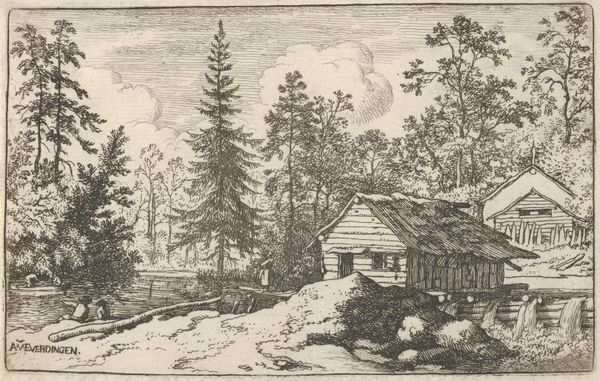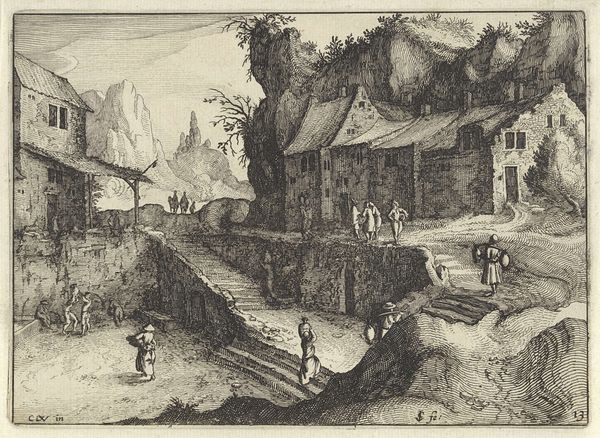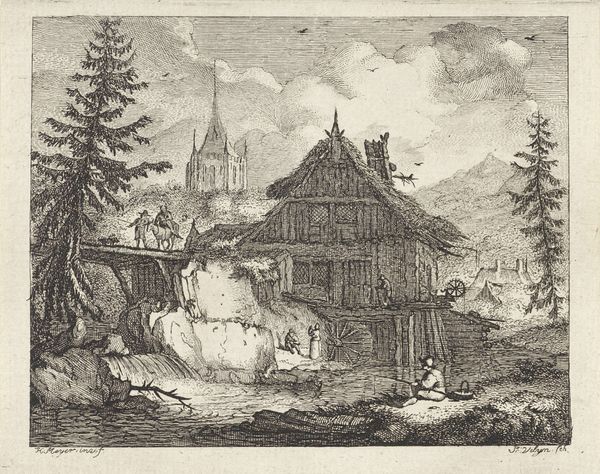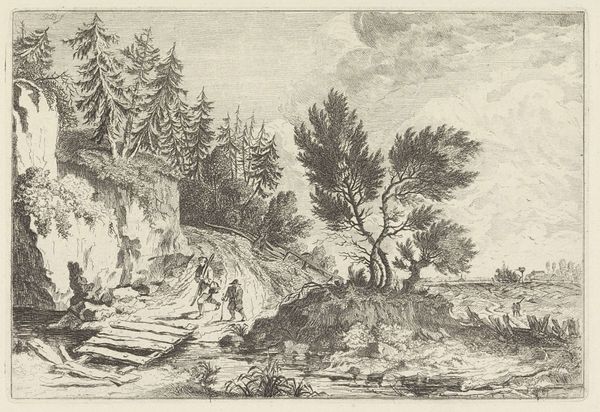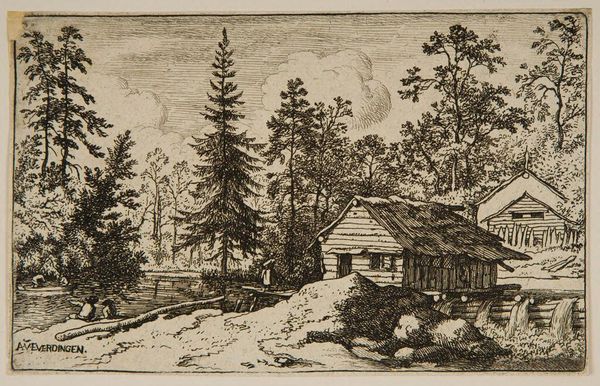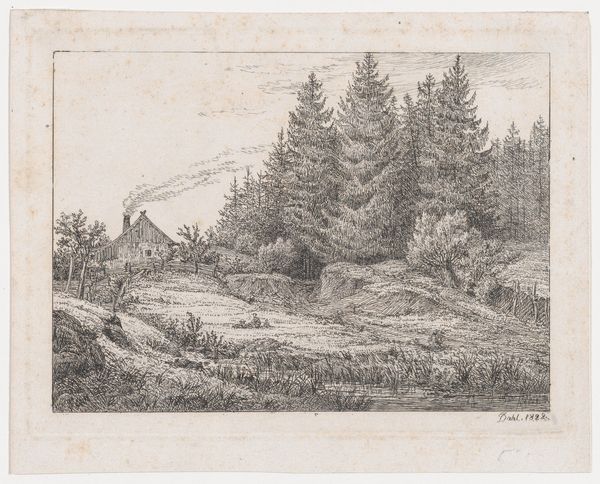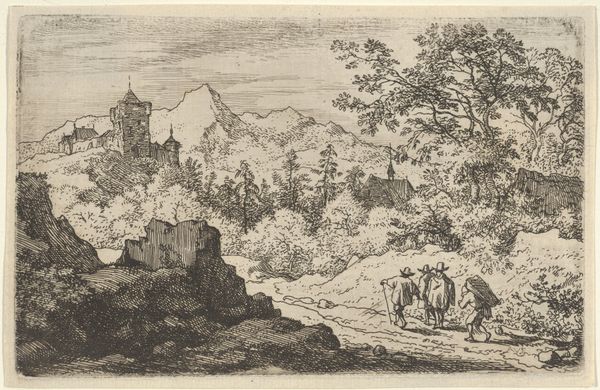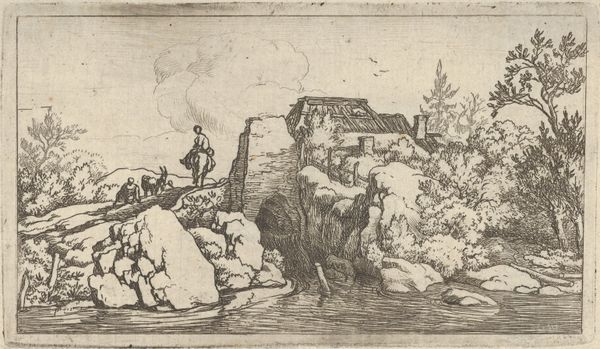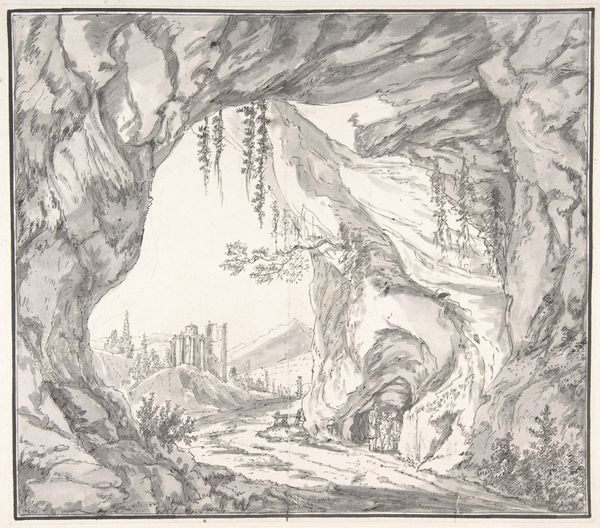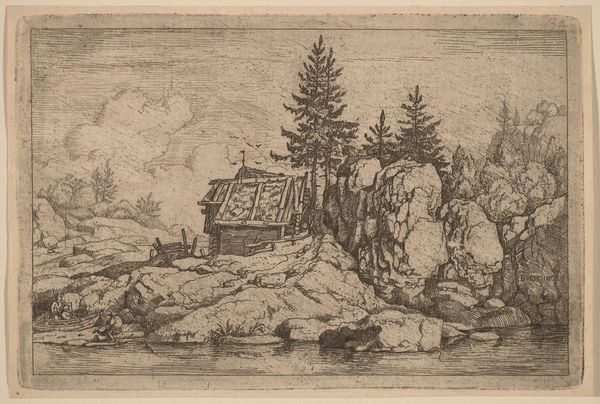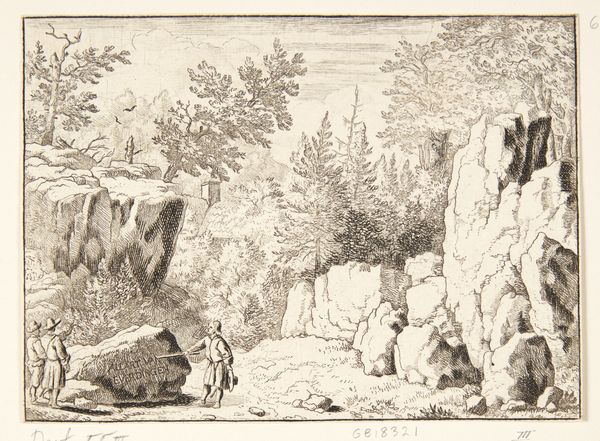
print, engraving
#
baroque
# print
#
landscape
#
genre-painting
#
engraving
Dimensions: height 113 mm, width 156 mm
Copyright: Rijks Museum: Open Domain
Curator: Welcome! We’re standing before Gillis Peeters' "Landscape with Tobias and the Archangel Raphael," a print created sometime between 1634 and 1653. Peeters, known for his landscape work, captures a moment of quietude in a vast, carefully engraved space. Editor: Immediately, I'm struck by how much detail Peeters manages to pack into this relatively small print. The stark contrast of light and shadow creates a surprisingly dramatic effect, almost cinematic. It's a captivating depiction of nature intertwined with humanity. Curator: Precisely. Note how Peeters places Tobias and Raphael almost discreetly in the foreground, their presence less dominant than the rugged landscape itself. This reflects the era’s changing relationship with religion; everyday people and narratives are emerging, set within the broader, dominating structure of the natural world. Editor: Absolutely. I see it as representative of how biblical narratives were being re-interpreted. Tobias' journey, guided by Raphael, speaks to themes of healing and protection, resonating in a Europe often disrupted by conflict. And their small size… Perhaps suggesting that even within monumental trials, the most valuable figures in the story remain overlooked. Curator: It is true that the imagery reflected, or was supposed to reflect, how biblical events occurred and were supposed to be understood. One can observe the way that genre painting in the Dutch Golden Age was strongly shaped by societal expectations of piety and moral instruction. The narrative is almost secondary, as Peeters prioritizes constructing a believable—and aesthetically pleasing—world. Editor: A world that wasn’t equally accessible or representative, either. While visually stunning, such landscape often represented colonial power and expansion into other environments through the lens of privilege, subtly reinforcing a sense of dominance over both nature and non-European lands. Curator: That's a crucial point. Examining these landscapes with a critical eye helps us unravel the complex relationships between art, power, and representation, providing context for analyzing how history can subtly condition assumptions of superiority and entitlement. Editor: Reflecting on Peeters’ print now, I appreciate its intricate detail and historical relevance. But, it reminds me that art, beautiful as it can be, also holds complicated socio-political echoes that we need to address for true engagement with its narrative.
Comments
No comments
Be the first to comment and join the conversation on the ultimate creative platform.

